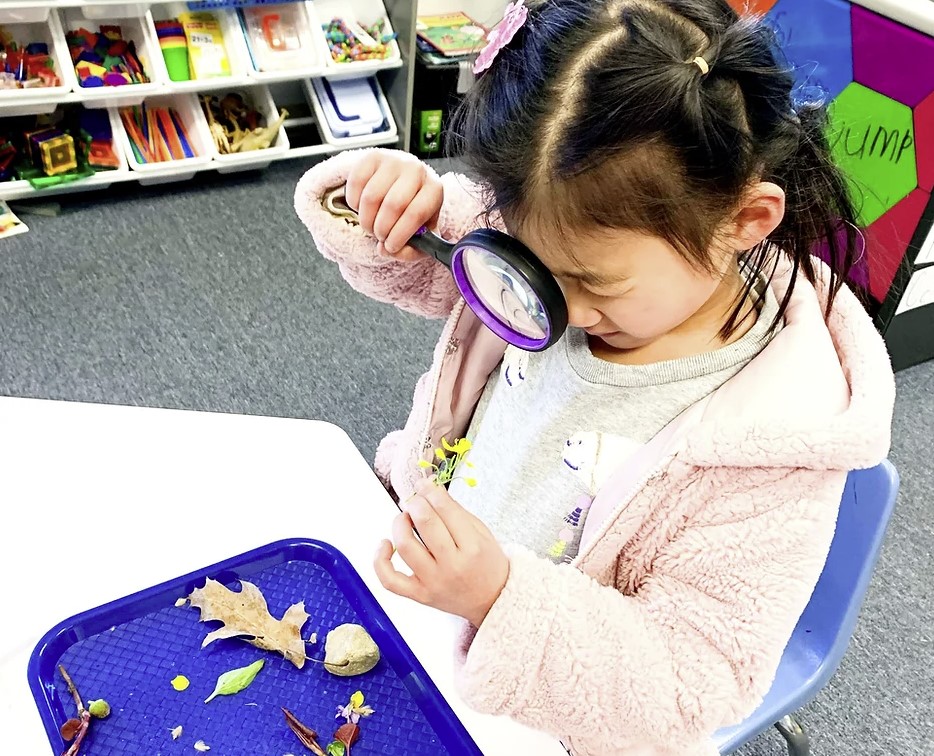Science
Investigative Science at Lotus Academy
Science is a subject that involves curiosity, exploration, discovery, and problem-solving.
That is why wonder is at the heart of teaching science at Lotus Academy.
In the spirit of the scientific method, we replace rote learning with investigative learning. First introductions to a subject are crucial: they can shut and open doors in a child’s mind. Depending on how it is taught, Science may very well become your child’s passion.
To help young learners first develop these skills and enjoy their encounters with science, teachers need to use effective instructional strategies that simplify the seemingly complex.
At Lotus Academy, we do this by tying everything to the world around us.
Your child will learn about the natural and physical world around them and the laws of physics and motion that govern all elements.
Through simple experiment, they will share the joy of discovery that scientists have experienced during their own journeys.
Here are some effective techniques we use for teaching science to grades K-2:
- Play: Young children learn best when they can see and manipulate concrete objects and materials. Visual objects can help them understand abstract concepts and phenomena, such as the water cycle, the solar system, or the life cycle of a butterfly. Our teachers use all sorts of models, diagrams, pictures, videos, or demonstrations to illustrate scientific ideas and processes
in a memorable manner. - Visceral examples: Children are naturally curious and eager to explore the world around them using their senses. Experiments that involve tasting, smelling, and touching are more likely to stimulate their interest and engagement in science. Teachers can let students taste different foods and classify them as sweet, sour, salty, or bitter; smell different plants and flowers and describe their aromas; or touch different textures and temperatures and compare their sensations.
- Explain science vocabulary through live experiments. For example, teachers can show evaporation is how water disappears when heated; what gravity means by dropping different objects and observing how they fall; or what friction means by rubbing their hands together and feeling the heat. From these experiments, we begin a slow transitional move from concrete to abstract concepts. They may have difficulty understanding abstract or complex concepts that are not directly observable or measurable. The transition needs to be gradual. Because up to the 2nd grade, children are still developing their logical thinking and reasoning skills. Teachers need to move from concrete to abstract concepts gradually, building on students’ prior knowledge and experiences. For example, teachers can start by introducing the concept of matter as something that takes up space and has mass; then move on to the concept of states of matter as solid, liquid, or gas; then introduce the concept of changes of state as melting, freezing, evaporating, or condensing.
- Encourage students to use a science notebook. A science notebook is a tool that helps students record their observations, questions, predictions, experiments, data, and conclusions. It also helps them organize their thoughts, reflect on their learning, and communicate their findings. Teachers can encourage students to use a science notebook by providing them with prompts, templates, or examples. For example, teachers can ask students to draw what they see before and after an experiment; write down what they wonder or want to know about a topic; make a hypothesis about what will happen in an experiment; collect and display data using charts or graphs; or write a summary of what they learned.
- Engage students by asking the right questions and encouraging questioning throughout the process.
Questions are essential for stimulating students’ curiosity and inquiry in science. Teachers can engage students by asking questions that spark their interest, challenge their thinking, or guide their investigation. Questions can activate students’ prior knowledge or connect science to their lives; questions can encourage students to make predictions or test hypotheses. Lastly, questions can prompt students to observe carefully or measure more accurately; questions that elicit students’ explanations or interpretations; or questions that invite students to evaluate their results or apply their learning. - Let students lead a hands-on exploration. Hands-on exploration is a key component of science learning. It allows students to actively participate in scientific processes and practices, such as observing, measuring, experimenting, analyzing, communicating, and collaborating. Teachers can let students lead a hands-on exploration by providing them with materials, time, space, and freedom to explore a topic or phenomenon on their own or with peers. For example, teachers can give students a variety of seeds and let them plant them in different conditions and observe their growth; give students magnets and let them experiment with their properties and effects; or give students rocks and let them sort them by different criteria.
- Always allow students to form their own conclusions. Then allow them to analyze and find their way to the solution using deduction.
These are some of the tips and techniques that our teachers use to teach science more effectively to our students by making deduction and experimentation fun, meaningful, relevant, and challenging for them.



